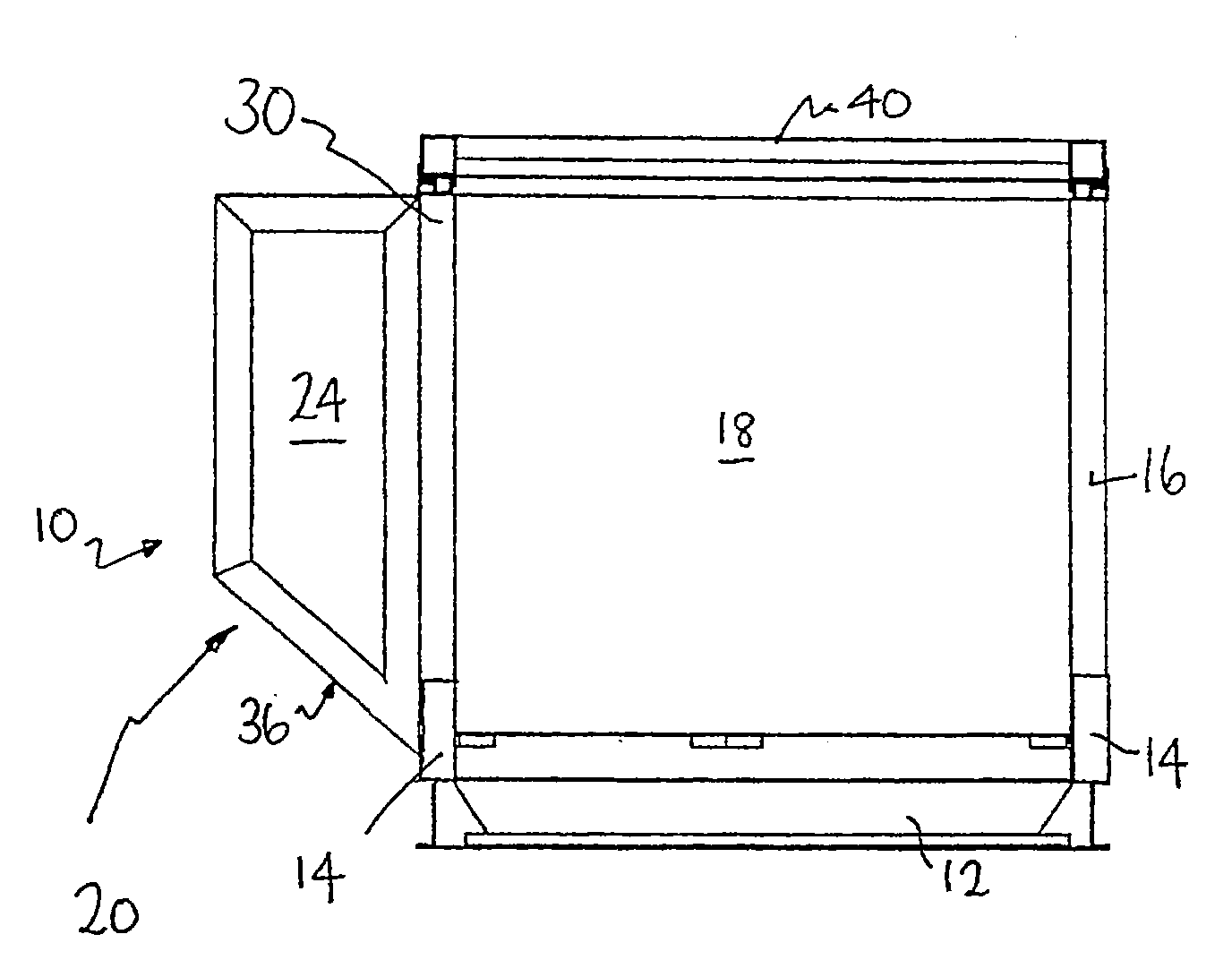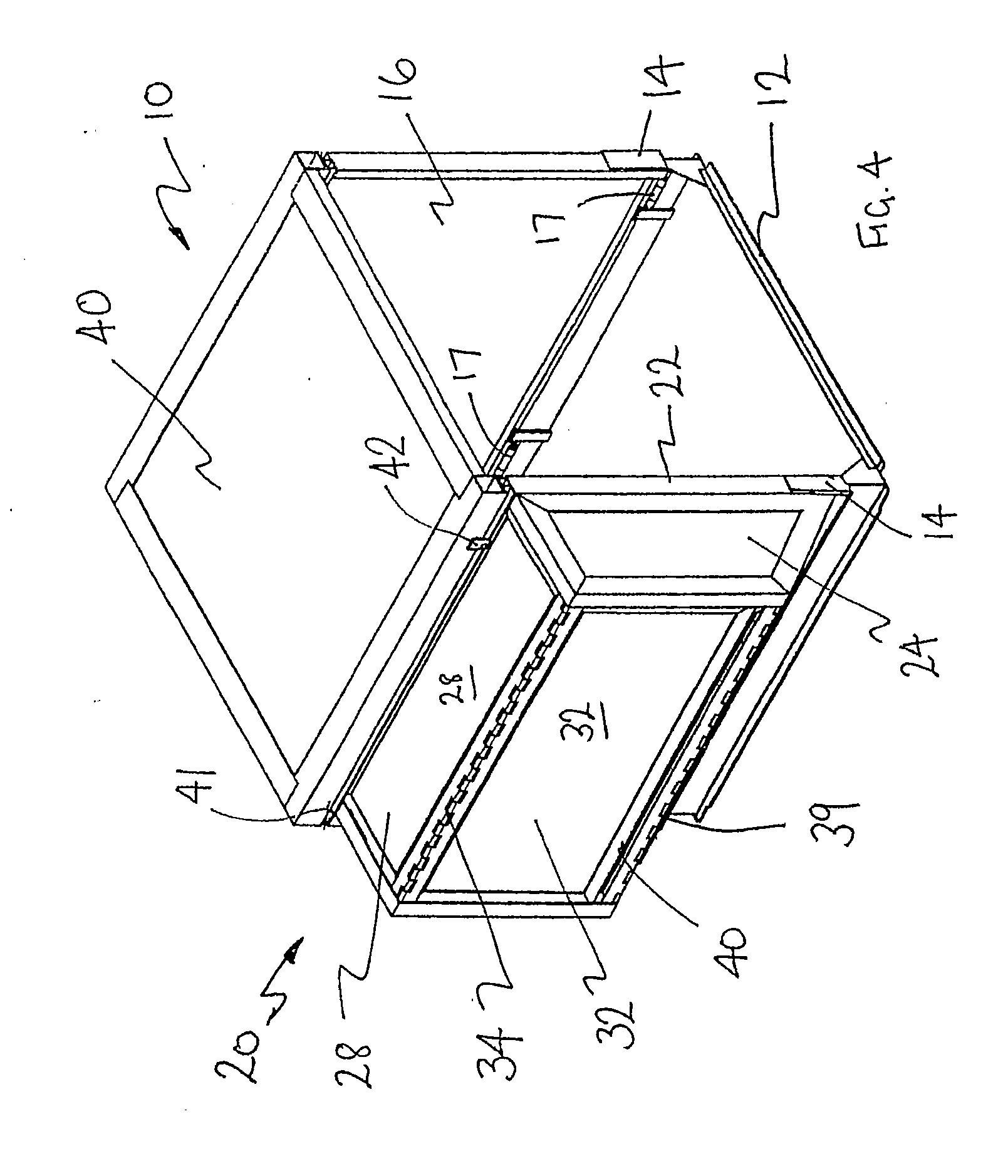Folding containers
a technology for containers and containers, applied in the field of folding containers, can solve the problems of limited space available in aircraft, waste and cost, easy damage, and often having to be taken out of service for repair, and achieve the effect of improving the stacking characteristics of the collapsed container
- Summary
- Abstract
- Description
- Claims
- Application Information
AI Technical Summary
Benefits of technology
Problems solved by technology
Method used
Image
Examples
first embodiment
[0050]FIG. 1 is a side elevation of an air freight container embodying the present invention;
[0051]FIG. 2 is a front elevation of the air freight container of FIG. 1;
[0052]FIG. 3 is a top plan view of the air freight container of FIG. 1;
[0053]FIG. 4 is an isometric view of the air freight container of FIG. 1;
[0054]FIG. 5 is a side elevation illustrating a first stage in the folding of the container of FIG. 1;
[0055]FIG. 6 is an isometric view illustrating the first stage in the folding of the container shown in FIG. 5;
[0056]FIG. 7 is a side elevation illustrating a second stage in the folding of the container of FIG. 6;
[0057]FIG. 8 is an isometric view illustrating the second stage in the folding of the container shown in FIG. 7;
[0058]FIG. 9 is an isometric view illustrating a further stage in the folding of the container shown in FIG. 8 being the start of the folding of a side extension;
[0059]FIG. 10 is a further isometric view illustrating the folding of the side extension;
[0060]FI...
second embodiment
[0073]FIG. 24 is a side elevation of an air freight container embodying the present invention;
[0074]FIG. 25 is a front elevation of the air freight container of FIG. 24;
[0075]FIG. 26 is a top plan view of the air freight container of FIG. 24;
[0076]FIG. 27 is an isometric view of the air freight container of FIG. 24;
[0077]FIG. 28 is an isometric view illustrating a first stage in the folding of the container of FIG. 24, being the folding of a side extension;
[0078]FIG. 29 is an isometric view illustrating a second stage in the folding of the side extension of the container shown in FIG. 28;
[0079]FIG. 30 is a side elevation illustrating a third stage in the folding of the side extension of FIG. 29;
[0080]FIG. 31 is an isometric view illustrating a fourth stage in the folding of the side extension shown in FIG. 30;
[0081]FIG. 32 is an isometric view illustrating a further stage in the folding of the side extension shown in FIG. 31.
[0082]FIG. 33 is a side view illustrating a further stage ...
PUM
 Login to View More
Login to View More Abstract
Description
Claims
Application Information
 Login to View More
Login to View More - R&D
- Intellectual Property
- Life Sciences
- Materials
- Tech Scout
- Unparalleled Data Quality
- Higher Quality Content
- 60% Fewer Hallucinations
Browse by: Latest US Patents, China's latest patents, Technical Efficacy Thesaurus, Application Domain, Technology Topic, Popular Technical Reports.
© 2025 PatSnap. All rights reserved.Legal|Privacy policy|Modern Slavery Act Transparency Statement|Sitemap|About US| Contact US: help@patsnap.com



